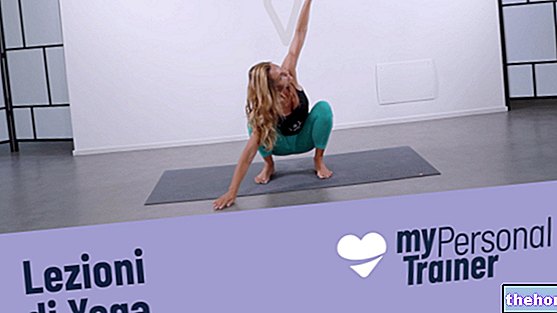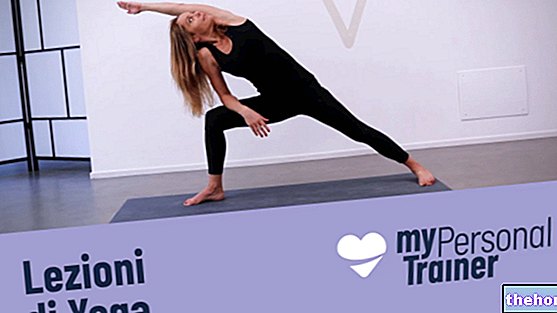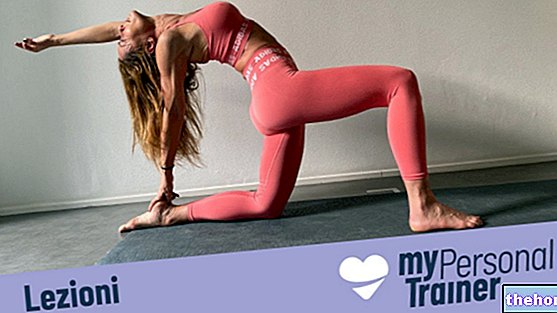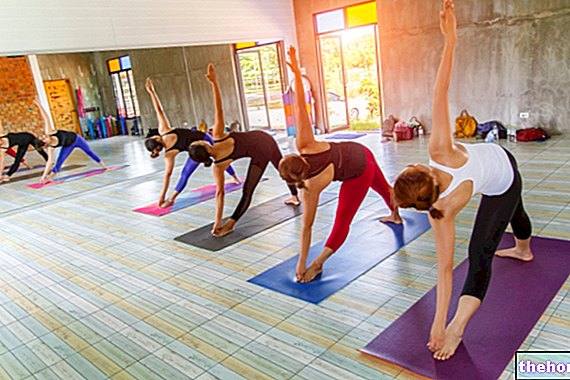Svarga Dvijasana is an intermediate level position, dedicated to those who have been practicing yoga for some time, because it requires strength, flexibility, a sense of balance and a good stretch of the rear muscle chains of the legs. In addition, this asana works on patience and the ability to concentration, both to enter the position and to stay there once you enter.
The Sanskrit name is formed from "Svarga" which means "Paradise", "Dvjia" which means, "twice born" and "Asana" which means position. In the West, the pose is translated with the expression: "Bird of Paradise", because the figure that is created recalls a tropical flower that bears that name. It is a "polar position that is performed first on one side and then on the other" .
Let's try it together!
left upwards, opening the chest wide, trying to open the heart upwards. The right hand moves off the ground and moves under the right thigh and grasps the wrist of the left arm which descends behind the back. Open your chest straight upwards entering the position of Baddha Parsvakonasana. Close the toe of the right foot inside, always keeping the wrist hooked, bring both feet together, and lift the right leg upwards while keeping the closure at the wrist You can enter the position progressively, first keeping the right knee bent and then bringing the straight leg pointing upwards. Stay here for five breaths (breathing in yoga is essential!) Then slowly bring your right foot back to the ground, release the position and repeat everything on the other side.
Repeat everything on the other side!
Stand with your legs apart on the mat and point your left toe to the left and keep your right foot in the forty-five degree cut flat on the ground. Bring the palm of the left hand to the ground and extend the right arm upwards, opening the chest wide. The left hand rises from the ground and goes under the left thigh and goes to grab the wrist of the right arm which descends behind the back Open the chest wide, rotating the chest upward and enter the position of Baddha Parsvakonasana. Close the left toe inward, keeping a firm grip on the wrist, bring both feet together, and lift the left leg upward while keeping the wrist lock. You can enter the position progressively, first keeping the knee bent and then bringing the straight leg upwards. Stay here for five breaths, then slowly bring the leg back to the ground.
and stretching the posterior muscle chains.The muscles of the abdominal band are toned up because they are constantly engaged both to maintain balance and the elevation of the body upwards, and during the descent to the ground.
The hips and pelvis open and melt, helping to ease the emotional tensions of the body, remember that the pelvis is the seat of the soul and emotions.
This asana also helps us to develop the pectoral muscles, the shoulders and to strengthen the arms, constantly active in supporting the leg both in the ascent and in the descent.
Svarga Dvijasana is not recommended for those with knee, back and shoulder problems due to the significant strain these parts of the body undergo. If you feel pain in the inner thigh or arm, do not insist on the position but work better on its preparation by practicing Warrior Two, Parsvakonasana and Baddha Parsvakonasana.
We just have to get all on the mat!
This training is done in partnership with Yogaessential
















.jpg)











